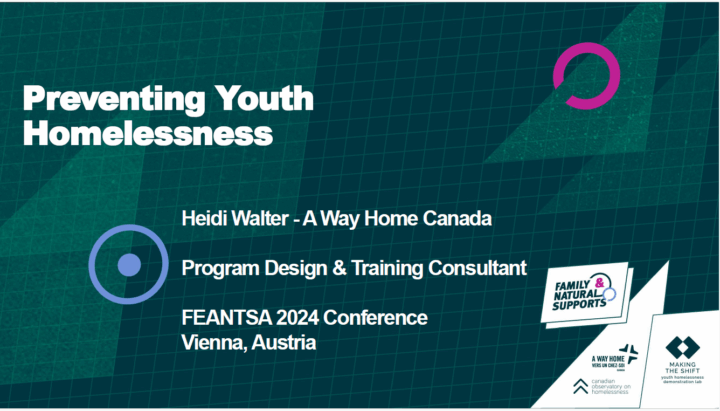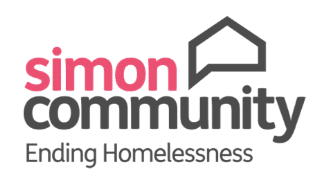WHAT IS HOUSING FIRST FOR YOUTH

Adapted from the successful Housing First approach, Housing First for Youth (HF4Y) is a rights-based intervention for young people (aged 13-24) who are experiencing homelessness, or who are at risk of becoming homeless.
One of the goals of HF4Y is to support young people through their adolescence and facilitate a healthy transition to adulthood, all while having a safe and stable place to call home.
Another goal is to help prevent homelessness or help youth to quickly exit homelessness. HF4Y is designed to address the needs of developing adolescents and young adults by providing them with immediate access to housing that is safe, affordable and appropriate, and the necessary and age-appropriate supports that focus on health, wellbeing, life skills, engagement in education and employment, and social inclusion. It is not time limited, and more than just offering housing and supports.
The Core principles of HF4Y

Youth choice and self-determination
As a rights-based, client-centred approach, HF4Y emphasizes youth choice regarding housing and supports. In practice, it means presenting the options available that fit the criteria of HF4Y, the pros and cons of each, what is recommended given the young person’s circumstances, and asking them what they would like to do and what support they think they need.

Immediate access to housing with no preconditions
All Housing First services are based on upholding housing without preconditions as a human right as described by the UN. For youth, age is an important consideration in the type of housing provided. Housing for HF4Y needs to be safe, affordable and appropriate, based on the needs and abilities of developing adolescents and young adults.

Positive youth development orientation
HF4Y uses a strengths-based approach that focuses not just on a young person’s risk and vulnerability, but also their strengths to build self-esteem; improve communication and problem-solving skills; enhance and build natural supports, including family relationships; access opportunities and identify personal interests.

Individual, client-driven support with no time limit
Due to their age and stage of development, HF4Y recognises that the needs of young people evolve over time, so the nature and range of supports must be adaptable. Individualised plans of care take into account developmental changes, capabilities and capacities, maturity and level of independence.

Social and community integration
Social inclusion and community integration are crucially important to the development of adolescents and young adults. HF4Y promotes social inclusion by helping young people build strengths, skills and relationships that will enable them to fully integrate into and participate in their community, in education and employment.
Key Publications
publication
An Introduction to Housing First for Youth (HF4Y)
Designed for people who are learning about Housing First for Youth (HF4Y) for the first time, this short introductory guide offers an overview of the key elements of HF4Y…
Find out more hereresource
THIS is Housing First for Youth: Europe – A …
Working in cooperation with our partners in Canada, Ireland, Scotland and The Netherlands, the Hub is delighted to announce the publication of THIS Is Housing First for Youth –…
Find out more hereSpotlight: Partners delivering HF4Y
A Way Home Canada
Centrepoint
Cymorth Cymru
Webinars on HF4Y
Housing First for Youth Webinar (FEANTSA Youth Ho…
Housing First has grown as a popular service model for combatting homelessness in Europe. With increasing youth homelessness, the model has become increasingly popular as an intervention for young…
Checkout the recording hereFinancing Youth Housing Solutions (FEANTSA Youth H…
In this webinar Michelle Norris, Professor of Social Policy at University College Dublin, discusses how to finance housing solutions for young people looking at opportunities for funding social housing…
Checkout the recording hereHousing First for Youth
Youth experiencing homelessness have particular needs that require the adaptation of Housing First to meet those needs. Research from Canada and Europe on adaptations of Housing First is presented…
Checkout the recording hereHF4Y Rock Trust Pilot Evaluation – Internati…
Kate Polson, CEO of Rock Trust, Lisa O’Brien, Project Leader for Focus Ireland, and Melanie Redman, Co-Founder, President & CEO of A Way Home/Vers Chez Soi discuss the realities…
Checkout the recording herePublications
Housing First for Youth Training Guide 2023
Housing First for Youth, adapted from the Housing First approach, is a rights-based intervention that provide safe and affordable housing, along with age-appropriate support, to address the needs of…
Find out more hereHousing First for Youth – Definition & …
These slides were used during the Housing First for Youth session of the International Social Housing Festival in Helsinki, June 2022. The presentation is made available with the permission…
Find out more hereCauses of Youth Homelessness and Housing First Pat…
These slides were used during the Housing First for Youth session of the International Social Housing Festival in Helsinki, June 2022. The presentation is made available with the permission…
Find out more hereIntroduction to Housing First for Youth
A slide deck developed by the Hub and made available for use by Housing First and Housing First for Youth trainers, practitioners, and advocates. View or download the presentation…
Find out more hereYouth Housing & Housing First for Youth in Fi…
These slides were used during the Housing First for Youth session of the International Social Housing Festival in Helsinki, June 2022. The presentation is made available with the permission…
Find out more hereFamily and Natural Support
The word “family” can provoke mixed feelings for many youths experiencing or at risk of homelessness. Family may bring up past sources of pain as a result of conflict, neglect, or even abuse and separation. Unfortunately, a large number of young people enter into homelessness because of challenges they experienced with their parents and family. The Without a Home study found that 77.5% of youth cited an inability to get along with their parents as a key reason they left home.
But the word family can also prompt positive associations as well, of a person’s first experiences of love, attachment, and care. Although many young people flee abusive and otherwise problematic family situations, the Without a Home study also found that a majority of youth surveyed were in contact with a family member at least once per month and that 77.3% would like to improve their relationships with family.
For those providers supporting youth at risk of or going through homelessness, then, it is important to recognise the crucial role that such relationships play in personal development and to find ways to support youth in understanding, navigating, and strengthening these vital connections.
For most young people, there is at least one adult—maybe a parent, grandparent, aunt, uncle, sibling, neighbour, teacher, tutor, Elder—who is important and cares about them. Strengthening these relationships through counselling, mediation, and skill building may be the support that a young person needs to prevent them from experiencing homelessness, keep them connected to community and school, and create a network of support they can draw upon throughout their life. FNS work is based on the understanding that young people cannot—and should not have to—rely solely on professional supports to provide a sense of belonging and social inclusion.
Below you can find the 5 Core Principles of the Family and Natural Support model:
- Connection First
- Youth and Family at the centre
- Autonomy and Accountability go hand in hand
- Skill-building that leads to Growth
- Individualised, flexible, non-judgemental practice
Heidi Walter’s presentation on FNS
This PowerPoint was created by our partner, Heidi Walter from A Way Home Canada, for the 2024 FEANTSA Forum in Vienna.
It explores the goal of the FNS approach, outlines its five core principles, and explains why this approach should be adopted and why we should consider shifting towards it.
Find the full Powerpoint presentation here.

Community of Practice HF4Y
The goal of this Community of Practice is to share knowledge among front line workers, managers and other people involved or interested in the topic of Housing Fist for Youth to strengthen the skills and knowledge of everyone involved and also discuss important topics and questions among the participants.
The HF4Y CoP meets up every fourth Monday of the month at 4pm Brussels time!
If you are interested in taking part in this initiative, please fill out this form.
Feel free to also share the link with anyone who may want to be a part of this community– the more the merrier!
Should you have any questions, please don’t hesitate to contact Samara Jones, Programme Coordinator at the Housing First Europe Hub.

HF4Y Trainers’ Directory

Abele Sangiorgio
fioPSD; Opera San Francesco
Country: Italy
Languages: EnglishItalian

Alena Vachnová
Nadacia DEDO/ Foundation DEDO
vachnova@nadaciadedo.sk
Country: Slovakia
Languages: EnglishSlovak

Alex Smith
Homeless Link
alex.smith@homelesslink.org.uk
Country: UK
Languages: English

Amanda Bloxsome
Liverpool City Region Combined Authority
Country: UK
Languages: English
FAQs HF4Y
-
When young people become homeless, both their physical and mental health are at high risk. They are more likely to become physically ill, experience depression, or even death by suicide. Young people experiencing homelessness are especially vulnerable because of their lack of experience of the world. In many cases, young people who become homeless will previously have been almost entirely dependent on an adult for food, economic and social support, as well as housing. In losing access to the life experience of the adult(s) responsible for them, they are more likely to be manipulated and subjected to criminal exploitation. They are also more likely to drop out of school, and there’s a greater risk that they will develop substance addictions as a means to alleviate boredom, stress, or anxiety often as a result of peer pressure.
Another worrisome aspect is that despite the fact that youth experiencing homelessness are more likely to be victims than perpetrators of crime, most of the contact they have with the police is the result of the perception that youth experiencing homelessness are criminals and/or a public nuisance. This means it can be more difficult to build trustbased relationships and help young people to get the support they need. The combination of youth trauma and criminal victimisation can have profound long-lasting effects that contribute to long-term entrenchment in life on the streets. What’s more, those who experience homelessness in their youth are more likely to become chronically homeless in their adult life. If youth homelessness isn’t tackled at an early stage then the outcome is effectively creating the next generation of people who will experience chronic homelessness.
-
As with adult homelessness, there is no singular cause of youth homelessness, but it’s important to note that the most common causes are different to those of adult homelessness. Youth homelessness may be due to any number of factors, including addiction, poverty, domestic abuse, family homelessness, loss of a caregiver, exit from state care institutions (foster care, children’s homes), and exit from correctional care facilities, to name a few. In some countries, such as the Netherlands, about 70% of HF4Y service users have a (sometimes long and problematic) history in the youth care system. LGBTIQ people make up approximately 20- 40% of youth experiencing homelessness in Europe, while migrant young people become homeless due to a series of barriers in accessing social rights, housing, education and are faced with wide discrimination. Often, these young people have experienced relational problems such as domestic violence, conflicts at home, the breaking of a relationship and the divorce or loss of parents.
The lack of a social network also plays a role. Negative experiences in upbringing, family composition, school career, life events, financial position of the parents may also be relevant factors. Young people who have experience of being homeless often also deal with complex, multiple problems, such as financial, psychological and/or addiction problems, which in some cases may be combined with a mild intellectual disability. It’s crucial to understand that people who are homeless are not only those who are visibly living on the street. There is also ‘hidden homelessness’, whereby young people may not have a fixed home but may find temporary accommodation by staying with family, friends, ‘sofa surfing’, living in squats, or other non-permanent accommodation.
-
HF4Y is designed to provide support and access to housing for young people with high support needs who are homeless or at risk of homelessness. For example, in the Rock Trust pilot project, the “young people first presented to the HF4Y project, all had experienced some level of childhood trauma, instability, multiple moves and a lack of security, including a background of parental substance misuse, alcoholism and/or neglect. The majority of the young people had experienced domestic or institutional abuse. All of the young people came to the service with a history of complex needs and behavioural issues, these included: nonattendance or exclusion from school, going missing, offending behaviour and physical/ verbal aggression. Most had past or current issues with alcohol and/or drugs. Over half of the young people presented with mental health issues, and four were at risk of selfharming.” (Rock Trust HF4Y Pilot Evaluation, p.14 )
-
As in Housing First, housing in HF4Y should come from the standard housing market. Young people in HF4Y should have a choice as to where they live, should be listed on the tenancy including:
• Student accommodation
• Private Market Rental accommodation
• Transitional Accommodation
• Shared Accommodation
• Long-term tenancies HF4Y is innovative and different because the support stays with the young person even as they m -
Absolutely! HF4Y is designed for young people who have experience of homelessness or who are at risk of homelessness. HF4Y can be an important part of strategies to prevent youth homelessness and it is crucial not to let young people become or remain homeless for any length of time before they are eligible for HF4Y. This is particularly relevant for young people who may have ‘aged out’ of state-run care institutions or who are in the process of exiting youth correctional facilities. It can offer a bridge between the institutional experience and independent adult life by teaching young people important life skills in a safe environment, as well as supporting their educational needs and preparing them for employment.
-
Young people are at an important stage of their physical, psychological, emotional and social development and have specific needs related to their age. An important difference from adult Housing First services is that due to their developmental and life stage, young people do not necessarily require permanent housing in the same way as adults do. This is because young people are expected to move home several times as they pass from childhood to adolescence to young adulthood, regardless of their age or social situation. In normal circumstances, they might move from the family home into shared accommodation with friends as they attend third-level education or enter into the workforce for the first time. They may also change neighbourhoods or even cities to be closer to friends or different job or educational opportunities. HF4Y takes into account that young people need more choice and flexibility in terms of their accommodation at this stage of their life, and understands that it is natural for them to desire to change their living location or situation more often than adults with stable jobs or families. Young people need to be able to experiment and explore in order to identify what they want to do, where they want to be, and who they want to be as a natural part of developing into fully-grown, independent adults. Perhaps most importantly, HF4Y ensures that the accompanying support services stay with the young person as they move from one home to the next. The HF4Y workers ‘stick’ with the young person and provide stability throughout their transition into adulthood.
-
Answer here
-
Unlike other youth housing services, HF4Y is not time-limited. It is designed to not only provide stable, age-appropriate accommodation, but flexible support for as long as is needed. This means that young people are never discharged from HF4Y services into homelessness and there is continuity of care for the long-term (unlike some other services, such as state care homes, whereby young people may be discharged without further care provision when they reach an age considered to be ‘too old’ for the target age group for the service). This also means that HF4Y support is provided separately from the housing itself and ‘sticks’ with young people if or when they move from one home to another. As with Housing First, single unit housing is preferred for HF4Y accommodation, whereas other youth housing services may focus on group or shared housing or accommodation for young people. As part of HF4Y, young people sign their own rental/tenancy agreements, which contributes to a sense of stability, safety and ownership over their living space. It also contributes to helping young people develop independence and learn responsibility as they transition to adulthood, an important part of helping them acquire the domestic and life skills they need to stay in their homes. Another key difference is that there are no pre-requisites for access to housing in HF4Y. Young people are not expected to complete ‘housing readiness’ courses before they are settled into a home.
In HF4Y, there is a more educational and guiding role than in Housing First, because young people do not yet know what they do not know, and therefore, above all, must be able to make well-informed choices, whereas most adults already have a greater degree of life experience that they can draw on to make decisions about their lives. HF4Y support is more proactive about outlining the framework of possibilities available to service users, clearly explaining in understandable terms what the advantages and disadvantages are, and ensuring that young people feel empowered to make their own choices about their lives accordingly. In short: Housing First seeks to restore autonomy and independence to adults who may feel they have lost it, whereas HF4Y seeks to help young people develop their autonomy from the beginning.
-
HF4Y teams support young people to engage better with services to improve their health and (physical and mental) well being, and develop healthy coping strategies. Young people in HF4Y often have significant mental health issues and addictions. HF4Y workers build relationships with young people to support them to get involved with activities that are meaningful and tailored to their interests and needs. For some young people, these meaningful activities can include going to exercise classes, learning to drive, or even registering for courses or looking for employment.










